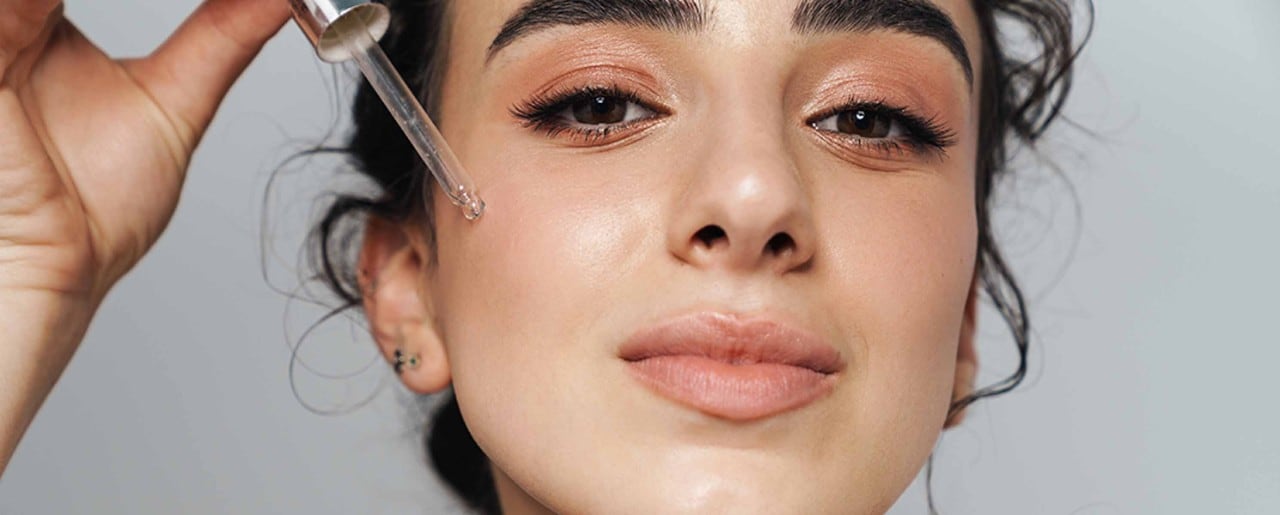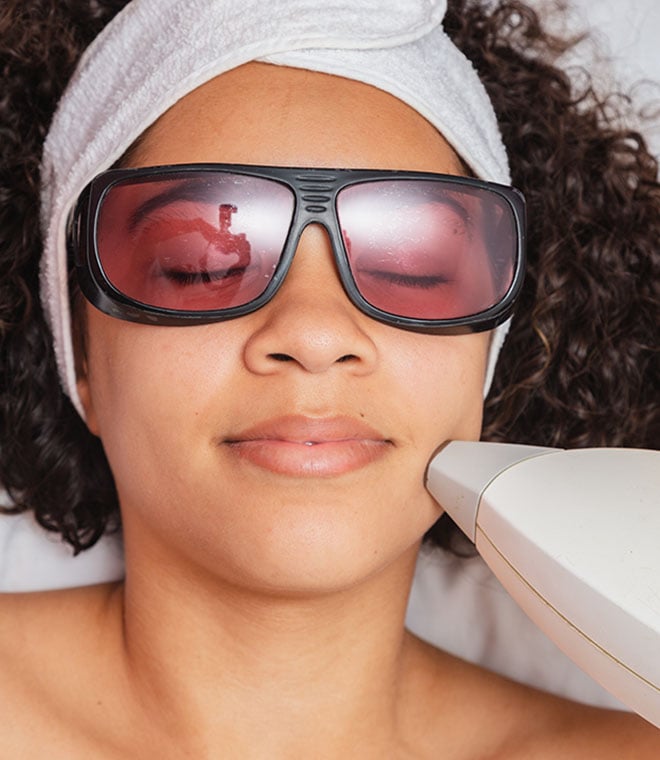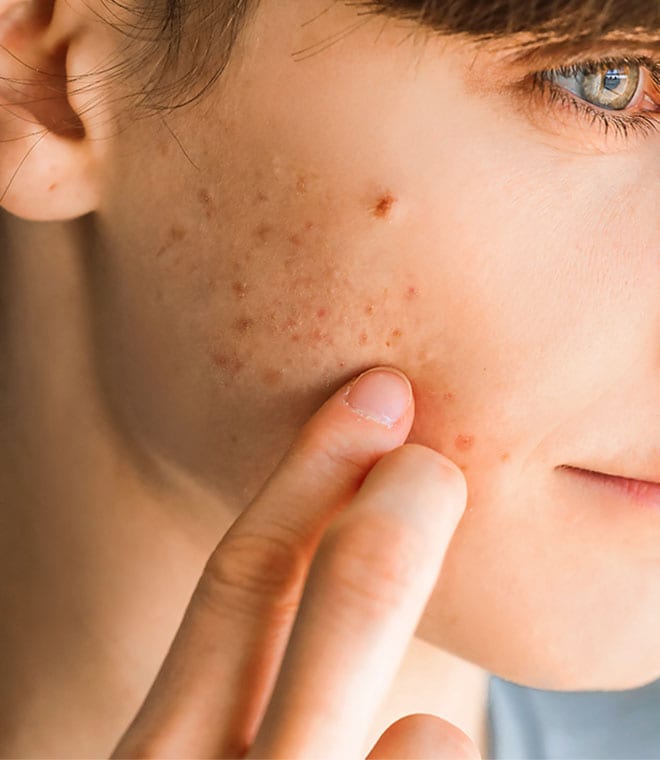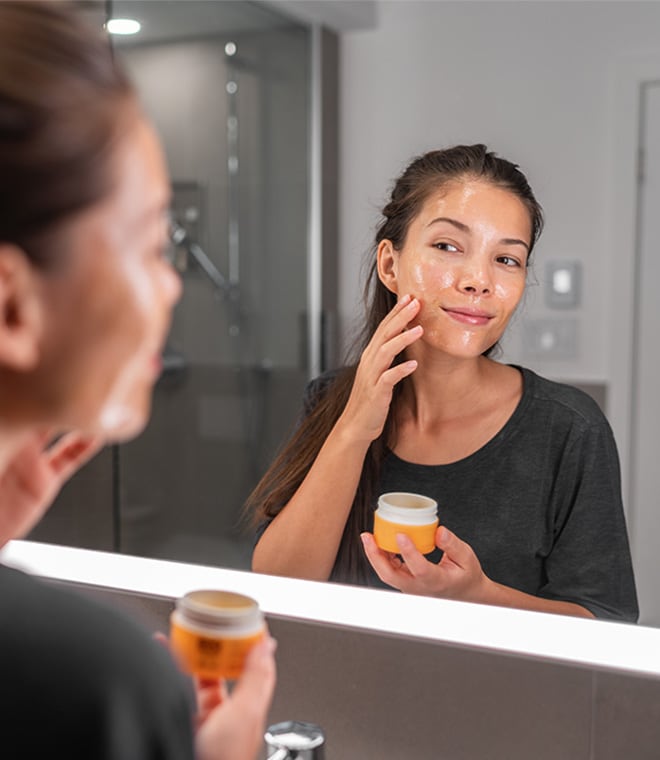Beauty
AHA skin care: Exfoliants, serums, toners and peels
By Anna H. Chacon, MD, Fellow of the American Academy of Dermatology Apr 19, 2024 • 9 min
If you use skin care products regularly, you've probably heard of alpha hydroxy acids (AHAs), and you may have used products containing these ingredients.
AHAs are very versatile and can be found in a variety of formulations, including exfoliants, serums, toners and peels. AHAs can be used to address a number of skin issues, and they can provide a range of benefits.
What does AHA mean?
AHA is an acronym that stands for alpha hydroxy acid. BHA is an acronym for beta hydroxy acid, which is a different type of hydroxy acid. Both types of hydroxy acids are commonly used in skin care products.
What is AHA?
An alpha hydroxy acid, or AHA, is an organic acid widely used in cosmetic and skin care products. Alpha hydroxy acids are used as exfoliators to help smooth fine lines and wrinkles, improve the tone and texture of the skin, unclog and clear pores, treat acne and reduce the appearance of scars, discoloration and keratosis—rough, scaly patches caused by sun exposure that may occur on the skin as you age. In some cases, AHAs are used in products to adjust the pH.
AHAs work by causing the surface layer of the skin to peel off. How well it works and how much it exfoliates depends on the concentration of AHA in the product, the product's pH, and what other ingredients are in the product.
AHA vs. BHA
AHAs and BHAs are both acids, and they're both used in skin care products, but they have some key differences. AHAs are water-soluble and generally used to exfoliate, while BHAs are oil-soluble and can get deeper into the pores to help remove dead skin cells and excess skin oils. For example, when considering glycolic acid vs. salicylic acid, it can be helpful to understand that glycolic acid is an AHA used for exfoliants and peels, while salicylic acid is a BHA used to help treat acne by clearing the pores of sebum and debris.
Is glycolic acid an AHA?
Yes, glycolic acid is one type of alpha hydroxy acid that's commonly used to treat acne. Other types of AHAs include lactic acid, malic acid, tartaric acid and citric acid. The most commonly used AHAs for skin care are glycolic acid and lactic acid.
- Glycolic acid. Derived from sugar cane, glycolic acid has different effects at different concentrations. At low levels, it may have anti-inflammatory effects, while at high concentrations, it exfoliates the skin. It may cause irritation and increase sensitivity to the sun. Glycolic acid is commonly used to treat acne.
- Lactic acid. Found naturally in milk sugar, lactic acid tends to be less irritating than other AHAs and can help improve the appearance of the skin. When applied directly to the skin, lactic acid can be effective for promoting cell renewal.
- Malic acid and citric acid. In nature, malic and citric acids are found in fruits. These are commonly used in skin care products, and they may be used to adjust the pH of a product. Some research suggests that malic acid may have antibacterial properties, which could be helpful for some bacterial skin infections. Citric acid is commonly used to help induce collagen production, and in higher concentrations, may increase the thickness of the skin, help rejuvenate sun-damaged skin, and increase the rate of skin renewal.
- Tartaric acid. Tartaric acid is found in many plants, including grapes and bananas. It's used to help control the pH of skin care products, and it's an effective cleansing agent and antioxidant. Tartaric acid isn't as well studied for use on the skin as glycolic and lactic acids, and further research is needed.
AHA peels
An alpha hydroxy acid skin peel, also known as an AHA peel or chemical peel, involves applying AHA to the skin for several minutes. The effectiveness of this type of peel depends on the concentration of AHA in the product and the duration of exposure to the skin. In general, AHA products with concentrations greater than 30% are applied by trained professionals and only left on the skin for a few minutes before rinsing it off.
Depending on your skin and the condition you're treating, you may need to repeat the peel for desired results. It's important to have a peel done by a dermatologist or highly qualified aesthetician.
Products with AHA
A wide range of products with AHA are available for purchase over the counter. Any consumer product that contains AHA will list it on the packaging and ingredients list. Alpha hydroxy lotion with a low AHA concentration is commonly used for daily moisturization and improved skin tone. Other products that may contain AHA include:
- AHA exfoliant
- AHA serum
- AHA peel
- AHA toner
What are the side effects of using AHAs on the skin?
Alpha hydroxy acids can cause a range of adverse reactions in people with certain skin conditions, as well as in people with skin that’s sensitive to AHA. Side effects may include swelling, burning or itching. Other more serious side effects of AHA may include:
- Rash
- Skin discoloration
- Welts or blisters
- Tenderness
- Chemical burns
- Increased risk of sunburn
Most serious side effects occur with products that have a high concentration of AHAs. Whether you will have a reaction to AHA depends on your skin type and the product's concentration of AHA.
How to use AHAs safely
To help prevent potential negative effects of using products with AHA, it's important to carefully follow the directions from your healthcare provider as well as instructions provided on the product packaging. Using more of the product than recommended, or using it more often than directed, can cause skin irritation or damage.
It's also important to remember that AHA may increase sun sensitivity. This can lead to serious sunburns. If you use products with AHA, wear sunscreen and protective clothing, and limit exposure to the sun. If you stop using AHA products, continue with these steps for at least a week after your last use.
The FDA notes that over-the-counter products containing glycolic acid or lactic acid are safe as long as:
- The concentration of AHA is 10% or less
- The pH of the product is 3.5 or greater
- The product includes an SPF, or the product description instructs the use of daily sun protection
In general, products with AHA are safe to use and can be helpful in improving the appearance of the skin. But they're not for everyone. If you have sensitive skin, choose an alpha hydroxy acid product with low concentrations, and if irritation develops, stop using it. If you have concerns or questions about AHA products, talk to your dermatologist to find out what types of products are best for your skin.
Clinically reviewed and updated by Julie McDaniel, MSN, RN, CRNI, April 2024.
- https://www.fda.gov/cosmetics/cosmetic-ingredients/alpha-hydroxy-acids
- https://www.ncbi.nlm.nih.gov/pmc/articles/PMC6017965/
- https://www.ams.usda.gov/sites/default/files/media/Tartaric%20acid%20report%202011%282%29.pdf
- https://www.health.harvard.edu/staying-healthy/shedding-your-skin
- https://www.merckmanuals.com/professional/clinical-pharmacology/pharmacokinetics/drug-absorption
- https://health.clevelandclinic.org/guide-to-facial-acids
- https://www.fda.gov/cosmetics/cosmetic-ingredients/beta-hydroxy-acids
- https://www.uptodate.com/contents/chemical-peels-principles-peeling-agents-and-pretreatment-assessment
- https://nationaleczema.org/glossary-skin-care-ingredients/
- https://www.fda.gov/regulatory-information/search-fda-guidance-documents/guidance-industry-labeling-cosmetics-containing-alpha-hydroxy-acids




